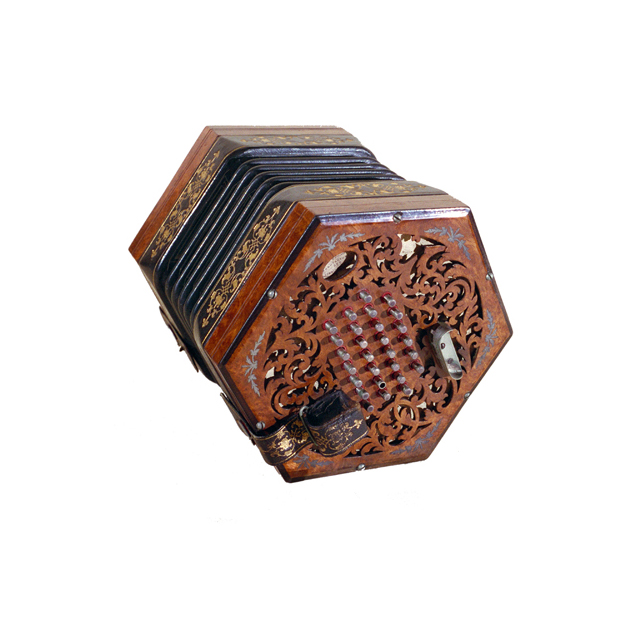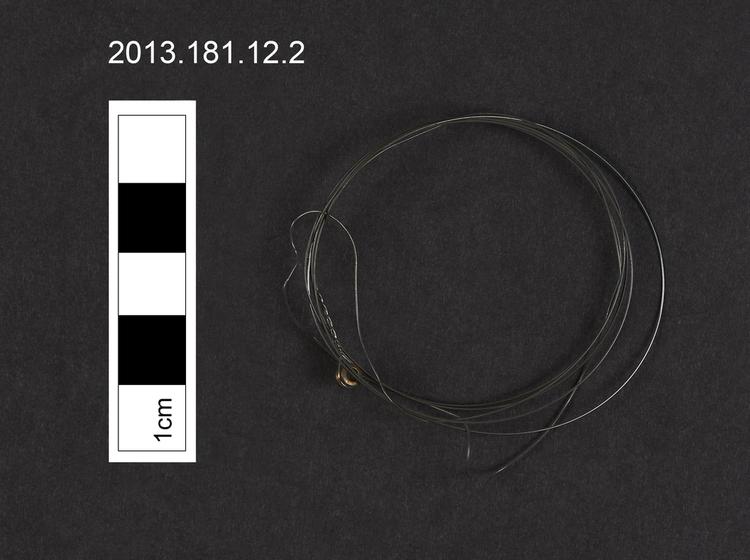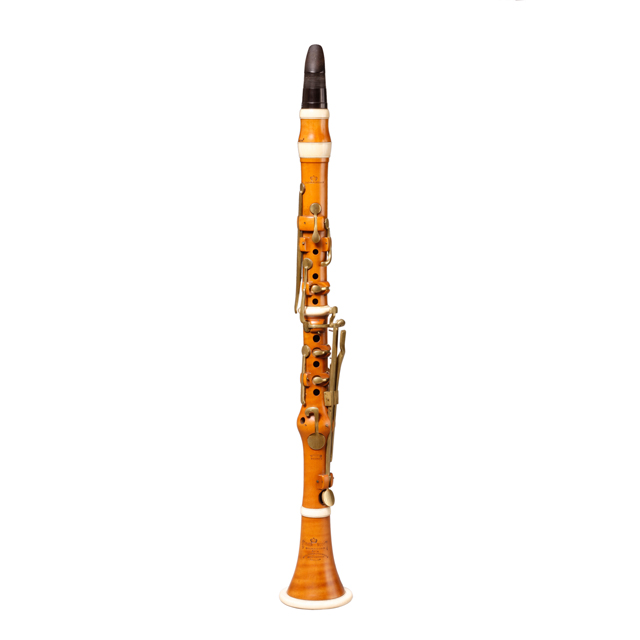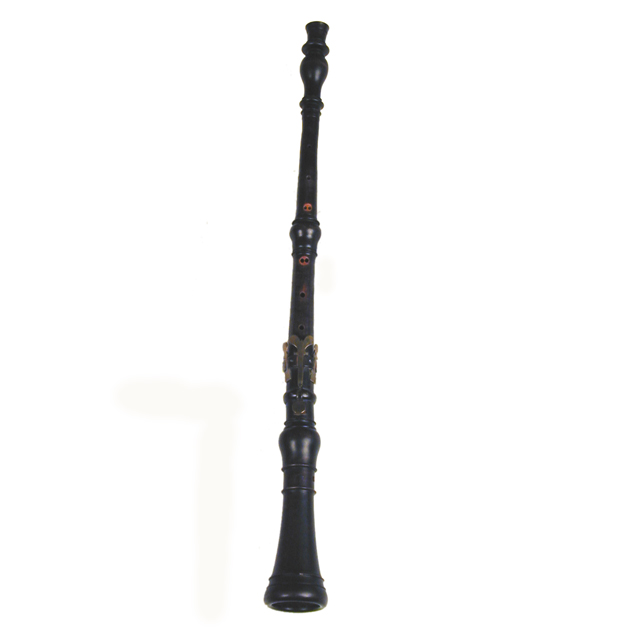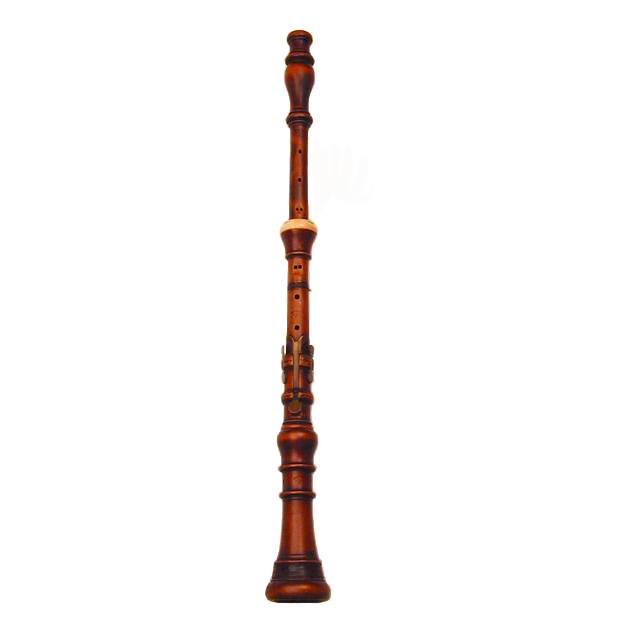
Three-keyed oboe, stamped 'STANESBY/IUNIOR' on all three joints. Index card reads: Three silver keys (D sharp duplication), flat, round, mounted in turned rings. Dark stained boxwood; one ivory mount at middle joint. Twin holes for third and fourth fingers. Middle section and bell both split and bound. (The C key falls at an angle and does not close with a pad of uniform thickness; this requires study). Keys need repadding. Split in bell needs glueing. Otherwise generally sound. Ex Peterborough Museum. Length overall: 595 mm, to holes: 485 mm; Bore at middle joint: 11 mm, at bell joint: 17 mm
Thomas Stanesby junior was one of London's most successful woodwind instrument makers in the first half of the 18th century. He was trained by his father Thomas senior, but established himself independently soon after the conclusion of his apprentiship. He set up a workshop in Fleet Street, and the quality of his craftsmanship soon led to his becoming both well-known and prosperous. After his death in 1754, the epitaph erected to his memory in St. Pancras churchyard described him as '…the most eminent man in his profession in any of Europe.' His celebrity was such that younger makers falsely claimed to have worked under him, and his trade card of 1728 warns that 'Whereas Instruments are sold about the Town pretended to be made by Persons who have worked under my Father or Me, which is an Imposition on the Publick, for my Father, or Self, never taught, or employ'd any other Person, in the finishing part of any Instrument whatsoever.' Forgery also seems to have been a problem, and a number of surviving instruments from the period carrying Stanesby's name have been shown to be counterfeit.



